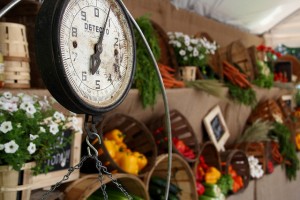
Did you ever wonder what farmers do after they’ve parked the tractor in the shed at the end of a busy growing season?
When the fields are bare and the animals are in the barn, you might think that farmers hang up their overalls and settle in for a well-deserved break. But you’d be wrong.
The end of harvest signals the start of the “planning and DIY” season.
Machinery and equipment needs to be fixed and tuned up. There are capital projects waiting for attention – reinforcing buildings, upgrading technology and installing new irrigation systems. Sheds need to be cleaned and organized. And for growers in the northern part of the country, “snow days” aren’t an option.
It’s also a time for reflection and regrouping. Farming is one of the riskiest occupations out there. Few other professions require you to commit massive investments at the start of the year just to do your job, with no guarantee that you’ll pull a paycheck later. With that much at risk, growers make decisions during their “off season” that have critical implications for the next year.

What crops to grow? What varieties of seeds should be purchased that will be best for the growing conditions? What crop inputs like fertilizers and crop protection products are needed, and how much? All of these decisions have price tags associated with them, and a set of risks and rewards to consider. Many turn to their team of advisors – crop consultants, financial planners and peers, to analyze data from the previous season and weigh their options for the next season.
As farmers reflect and regroup, many look for ways to enhance their agronomic and business knowledge. Our PadillaCRT team refers to it as “trade show season,” and for good reason. From early fall through late winter, the calendar of agricultural trade shows and learning seminars is packed. It’s a rare occasion that we can call a team meeting during this time without having at least one teammate on the road supporting clients at one of these shows.
While many carve out time during the winter for family vacations or a little break, thoughts of the next season are never far from their minds. And before they know it, they’re programming planting data into their tractors and heading back into the fields for another go at it.
For most farmers, it’s not just a job. It’s a lifestyle. Turning it “off” isn’t as easy as hopping in the car and commuting home. They analyze and plan, adjusting quickly to nature and other challenges that threaten even the best laid plans. It’s hard work, high-risk and, no, they don’t get to take winter off.
That’s exactly how they like it.
